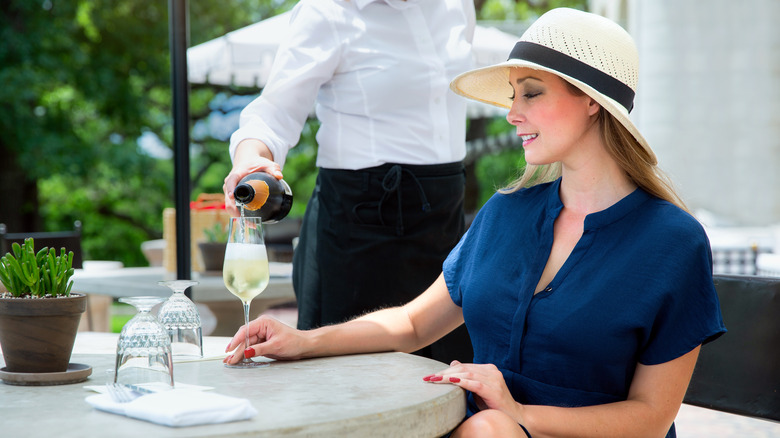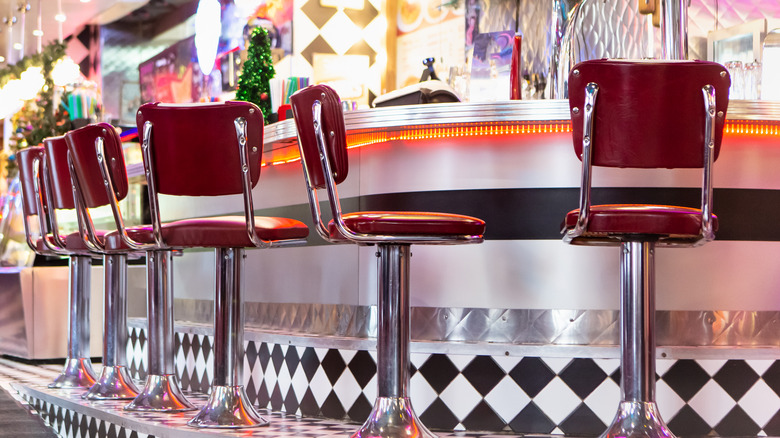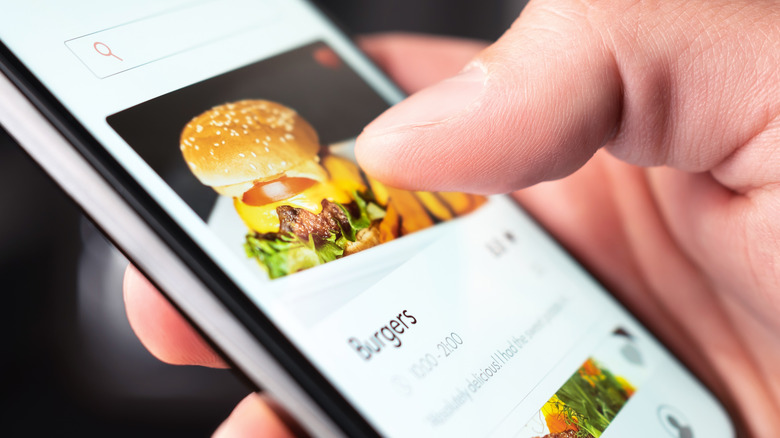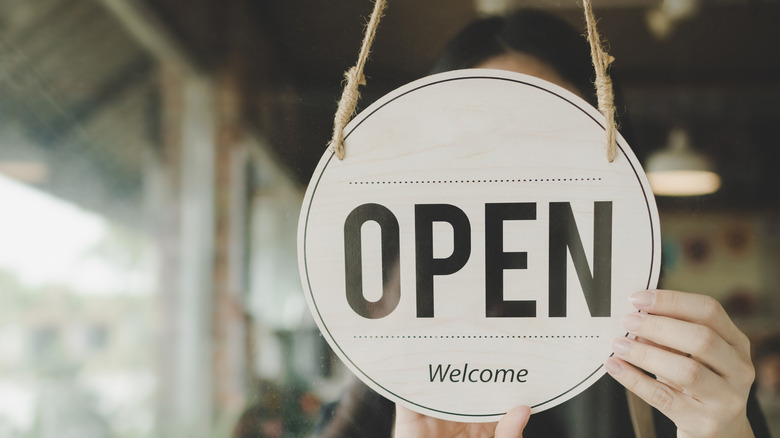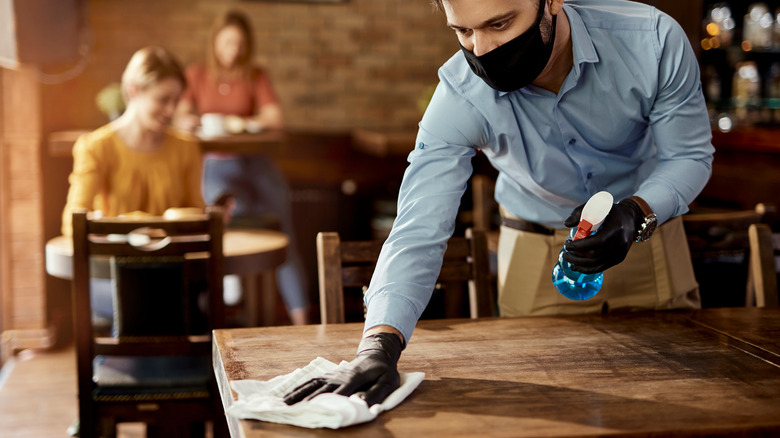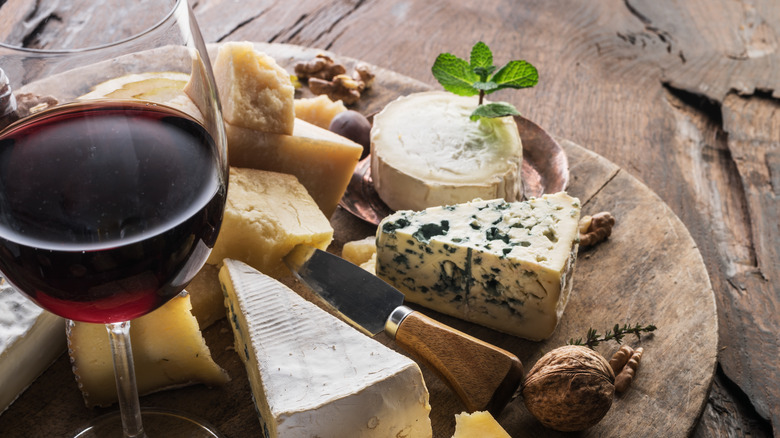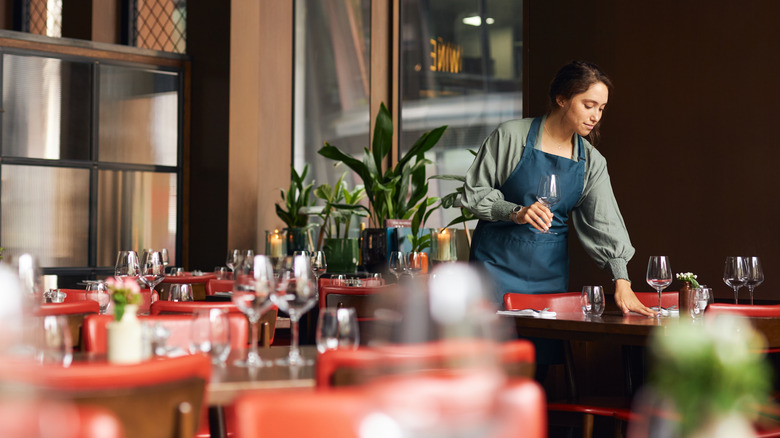Tips For Eating At A Restaurant Alone
Going out to eat on your own can be nerve-wracking. In a culture that prizes dining out as a way to get together with others and socialize, it is no wonder that people may not be fully comfortable eating out alone. However, it can be a rewarding experience. You get to make the call on everything and be totally selfish about what you want. Eating alone can be an opportunity for choices that you may not have had otherwise.
There are lots of reasons someone might go to a restaurant alone. Whether you are going for a quick lunch break during work, find yourself on a solo trip to a new area, or are just taking yourself out for a nice meal, eating alone does not have to be scary. We have compiled a list of tips and tricks to help get you ready for your solo dining adventure. Once you read this article, you will be ready to take on the experience of eating at a restaurant alone.
Let go of anxiety
Doing something new can be scary, especially when you are doing it by yourself. But when it comes to eating alone, we want to reassure you and help you let go of some of the anxiety around it.
First, we want you to know that just because you are eating alone does not mean people are staring at you. According to one study in Current Biology, we are hardwired to think people are staring at us. While this is not actually happening, it can cause undue stress to the nervous system when these thoughts go unchecked.
Additionally, while eating alone may feel strange, it is not that uncommon. According to Mintel, almost one-third of Europeans eat meals alone. According to a report in The New York Times, some areas, such as Tokyo, Japan, make it easy for solo dinners to eat, with small tables and bars being more of the norm. All over the world, diners are taking themselves out without judgment, and you should too.
Ease into it
If, after knowing the statistics, you are still a little anxious about eating alone, that is okay; try easing into it. A good way to do this is to do one of two things. First, start at a counter service-only restaurant. By going this route, you can order and take your food to a place of your choosing without too many interactions with other people. This could work in a chain, such as Panera or Chipotle, or at a café that offers food like soup and sandwiches.
Next, if you are looking for a more service-focused option, consider eating at a bar. This will allow you to place an order with someone and guarantee you won't have to get up for refills on drinks or add to an order. Additionally, you will not feel any pressure about taking your time or feel you are taking up a table. Bars aren't just for drinking alcohol; for instance, diners have bar seating as well. Additionally, as one commenter on the question forum Quora pointed out, sushi bars often have a bar specifically meant for the individual eater. A reporter for The New York Times pointed out that many Japanese establishments offer bar seating for this purpose. It is worth looking into this type of arrangement when choosing your solo dining restaurant.
Use technology
Technology can be a blessing, especially for those who are trying something new and may be nervous about it. Over the past few years, culinary-based technology has become increasingly incorporated into many dining experiences, and this can work to the solo diner's advantage.
First, if you are nervous about showing up and asking for a table for one, look into restaurants that use reservation services such as Open Table. This will allow you to state your intention to dine solo, as well as guarantee yourself a space without having to go through what may be an uncomfortable situation for the dinner.
Second, according to both The New York Times and Phys, many restaurants are now turning to tablets for ordering. This means you can go to a restaurant and potentially order your meal either at a tablet stand or at your seated table without having to talk to other people or deal with any perceived judgment about being a single diner. Using this technology to your advantage can help you ease into eating alone and get over some of the potential social anxiety associated with it.
Choose your restaurant with care
Possibly the most important decision of your solo eating experience will be where to eat. As such, you should take great care in picking your restaurant. There is no one right answer for which restaurant to go to, but instead a variety of elements when considering where you want to dine.
You should consider if you want to try somewhere new or a place you have been to before. Trying something new can be a fun adventure, but eating at a restaurant you are familiar with may help calm the nerves and make you feel more at home. You may also want to consider eating at a restaurant you enjoy but the important people in your life do not. Since it is only you eating out, it is entirely up to you and your tastes when picking the restaurant. Take advantage of this.
Additionally, consider some of the nuts and bolts of the restaurant. Are you looking for something that uses technology for making reservations or ordering meals? Think about whether the restaurant has small tables appropriate for a single diner or a bar, if you want to go in that direction. Do you want a louder bar atmosphere or a quiet fine dining experience? Consider what you want your time to look like, and then choose a restaurant accordingly.
Bring a book
Seriously, go ahead and bring a book. Really, this is just good advice in general, and we stand by it; but, when dining alone it can be a game changer. By bringing a book, you are giving yourself something to do in between eating and people-watching that is not scrolling through your Instagram feed. This isn't to say you cannot or should not take a peek at social media or check out other patrons. In fact, many enjoy the people-watching aspect of dining alone; having a book just brings another option, so you do not feel out of place. Plus, reading a book can provide a good cover when you are really eavesdropping on a juicy conversation at the next table.
Bringing a book also doesn't have to mean a physical book. If you are tight on pocket or bag space, consider downloading an ebook from apps such as iBooks or Kindle. No need to spend money either. Some programs, such as Project Gutenburg, offer free books in the public domain, and many libraries offer free loans of ebooks. Take that money saved and put it toward your meal.
Watch the clock
We are not trying to add to anyone's hesitation about eating out or actually setting a timer while you dine, but it is a good idea to watch the clock, especially when it comes to dining alone. First, it is important to remember that diners can come in rushes, and different days of the week may be busier than others. While, as noted in The New York Times, being a solo diner can have the benefit of a shorter wait time than larger groups, it is a good idea to be cognizant of that when deciding when to go. Google helpfully offers peak time charts for consumers to reference.
Additionally, no one wants to be at the table that outstays its welcome. As a blog for Poached points out, sometimes there are tables that just never seem to leave. While the waitstaff will likely be kind and serve you well, do not wait for the playoff music to take your cue and pack up for the night.
Bring something to stake your claim
This is a very logistics-based tip, but it is crucially important: Bring something to stake your claim. This means to bring an item, preferably something non-valuable, that you can leave at your table or chair to mark that it is yours and show that you have not left. This will save time and hassle no matter what kind of restaurant you choose. Say you need to go to the bathroom; you don't want someone assuming you were done and taking away your half-eaten meal. If you are at a place, such as Panera, that offers counter service and tables are up for grabs, it prevents someone from swooping in and taking your spot. And at restaurants with table service, it signals to the waiter that you have not skipped out on the meal.
For this purpose, we recommend an item such as a sweater. This is easy enough to drape over a chair or leave on a table and has the bonus of providing you with a little something should the restaurant air conditioning be on high or you are seated directly under a vent. By bringing something specific to stake your claim, you will not have to leave valuables, like a phone or wallet, at the table.
Treat yourself
In the wise words of Donna Meagle of "Parks and Recreation," treat yourself. You are out enjoying your own amazing company and have the opportunity to order whatever you want. You do not have to bend to the preferences of another person. You do not have to worry about whether someone else wants an appetizer or if it is rude to be the only one to get dessert. You get to make yourself happy.
This can be anything from ordering a fancy cocktail or a glass of wine; just keep in mind how you are getting home and consider ordering an Uber, walking, or using public transportation. This can also look like getting a dessert or an appetizer or just eating at a slightly more expensive restaurant than normal. Whatever it is that makes you happy, do it. And do not talk yourself out of it — you deserve it. And don't worry about having too much food; you can always take your leftovers home and remember your amazing experience the next time you take them out of the fridge.
Be kind to your server
Finally, and equally importantly, be kind to your server. Once again, this is good practice in general, but as a solo diner, if you have chosen a sit-down restaurant with table service, your server may be one of the only people you speak to during the course of the meal. It is okay to engage in small talk with them and ask questions about the food. If it is a particularly busy rush, try not to monopolize their time though. But overall, being kind to your server will likely get you a pleasant solo dining experience with as much, or little, socializing as you desire.
At the end of the meal, don't forget to tip your server. The waitstaff are considered tipped employees, which means legally they can be paid as little as $2.13 an hour, according to the United States Department of Labor. Servers rely on tips to make up their wages. A good average tip is 20% of the meal, and as Table Agents shows, an easy way to figure this out is to take the bill total, double it, and move the decimal one place to the left. For example, $20 doubled is $40; move the decimal point to the left and you'll find that the tip should be $4.00. It's simple math, which leads to great service and all parties leave happy.
